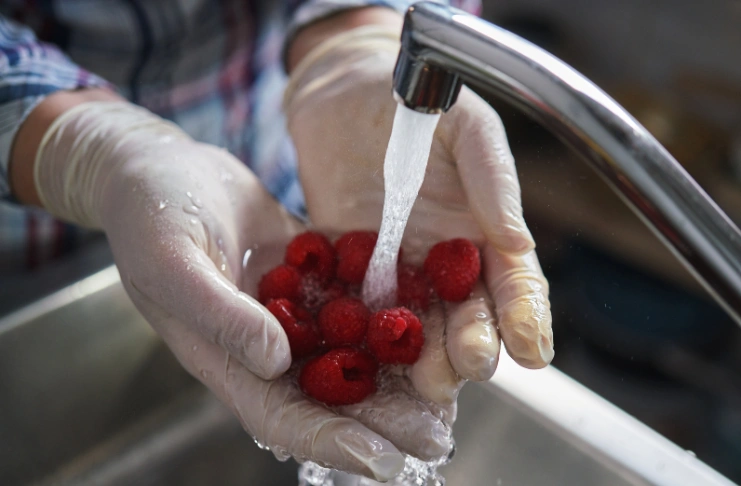The UK restaurant industry is tightly regulated and highly competitive. Success here depends not only on your food concept but also on whether you meet its legal and operational requirements.
This guide will answer how to open a restaurant in the UK clearly, legally, and practically. Use the checklist given below to ensure you’re aligned with the country’s regulations and set up for sustainable growth.
A Practical Roadmap to Opening a Restaurant in the UK
Launching a restaurant in the UK is a multifaceted endeavor that demands meticulous planning, adherence to legal standards, and strategic execution. Here’s a detailed step-by-step breakdown of everything you need to do hereon:
Step 1: Choose Your Restaurant Business Structure
Pick the most suitable business structure for your restaurant. A sole trader setup offers simplicity for single owners, requiring basic registration with HMRC. Limited companies provide liability protection and tax advantages, but involve more administrative responsibilities. Partnerships work well when multiple people share ownership and operational duties.
Each business structure affects your tax obligations, personal liability, and operational flexibility. Consider consulting an accountant to determine which option best suits your circumstances and growth plans.
Step 2: Develop Your Restaurant Business Plan
Create a detailed business plan covering your concept, target market, financial projections, and operational strategy. Include market research data about local competition, customer demographics, and pricing strategies. Define your unique selling proposition and how you’ll differentiate it from existing establishments.
Your business plan should outline startup costs, ongoing expenses, revenue forecasts, and break-even analysis. Mind that banks and investors require comprehensive business plans before approving funding applications. So, keep it up to date.
Step 3: Secure Funding and Set Up Business Banking

Calculate total startup costs, including equipment, renovation, licensing, inventory, and working capital. Then, explore funding options such as bank loans, investor partnerships, crowdfunding, or personal savings. Many food businesses require £50,000-£150,000 initial investment, depending on size and location.
Open a separate business bank account to manage your restaurant finances. This separation simplifies accounting, tax preparation, and financial tracking. Compare business banking packages to find competitive rates and suitable features.
Step 4: Complete Business Registration Requirements
Register your business with Companies House if operating as a limited company, or inform HMRC if a sole trader. Self employed individuals must register for self-assessment within three months of starting operations. Limited companies need directors, registered addresses, and annual filing obligations.
Business registration will establish your legal trading status and enable you to obtain the necessary licenses and permits. Keep registration documents accessible, as you’ll need them for various applications and compliance checks.
Step 5: Conduct Market Research and Location Analysis
Research your target market thoroughly, and try to understand your customer preferences, spending habits, and dining patterns. Analyse local competition, including their menus, pricing, service styles, and customer reviews. Identify specific gaps that your restaurant could fill effectively.
Location significantly impacts restaurant success. Consider foot traffic, parking availability, local demographics, and proximity to complementary businesses. Negotiate lease terms carefully, ensuring adequate space for kitchen operations, dining areas, and storage requirements.
Step 6: Register Your Food Business with the Local Authority
It is mandatory for all food businesses in the UK to register with their local authority at least 28 days before opening. This includes food businesses trading from physical customer facing premises, temporary premises, or through distance selling means. Registration is typically free but mandatory for legal operation.
Contact your local council’s environmental health department to begin food business registration. Provide details about your premises, food types, preparation methods, and operational hours. This registration enables health inspections and food safety monitoring.
Step 7: Understand Food Safety and Hygiene Regulations

Comply with food safety regulations governing preparation, storage, and service. Food businesses must implement Hazard Analysis and Critical Control Points (HACCP) systems to identify and control food safety risks. Document all procedures and maintain detailed records.
Food hygiene regulations require proper temperature control, contamination prevention, and cleanliness standards. Staff handling food need appropriate food hygiene training and regular refresher courses. Maintain cleaning schedules and pest control measures throughout your premises.
INDUSTRY INSIGHT
| Food safety is a top compliance priority for UK restaurants. Government data shows that 26% of all reported incidents in the past three years involved harmful microorganisms such as Salmonella, Listeria, or E. coli. These issues often lead to penalties, negative press, or forced closures of restaurants. However, despite such cases, consumer trust in regulators remains strong, with 69% to 78% of people in England, Wales, and Northern Ireland expressing confidence in the Food Standards Agency. This reinforces the need for clear hygiene procedures, HACCP compliance, and up-to-date staff training. |
Step 8: Obtain Necessary Licences and Permits
Apply for a premises license if selling alcohol or providing entertainment. The license application process involves public consultation and may require appearing before the local authority licensing committee. Designate a personal license holder to oversee alcohol sales and ensure compliance.
Consider additional permits for outdoor seating, signage, or structural modifications. Music licenses are required for playing recorded or live music. Some areas need planning permission for restaurant use, especially in residential zones or conservation areas.
Step 9: Plan Your Menu and Food Supply Chain

Develop a menu that reflects your concept while considering food costs, preparation complexity, and storage requirements. Source reliable suppliers for fresh ingredients, ensuring consistent quality and competitive pricing. Establish relationships with multiple suppliers to avoid disruptions.
Consider seasonal menu variations and dietary requirements, including vegetarian, vegan, and allergen-friendly options. Test recipes thoroughly and calculate accurate food costs to maintain profitable margins. Plan for efficient food preparation workflows in your kitchen design.
Step 10: Design Kitchen Layout and Install Equipment
Design your kitchen layout for maximum efficiency and food safety compliance. Separate raw and cooked food preparation areas to prevent cross-contamination. Ensure adequate refrigeration, cooking equipment, and washing facilities meet health department standards.
Purchase or lease all the equipment needed for your specific menu and service style. Consider energy efficiency ratings to reduce ongoing operational costs. Install proper ventilation systems and fire safety equipment as required by building regulations.
Step 11: Implement Food Safety Training Programs
Arrange food safety training for all staff members handling food preparation or service. Training covers personal hygiene, temperature control, cleaning procedures, and allergen management. Many providers offer certified courses recognized by local authorities.
Maintain training records and schedule regular refresher sessions. Consider appointing a food safety manager to oversee compliance and conduct internal audits. Regular training reduces health risks and helps maintain high food hygiene ratings during inspections.
Step 12: Hire and Train Restaurant Staff
Recruit experienced staff for key positions, including chefs, servers, and management roles. Check references and verify right-to-work documentation for all employees. Provide thorough training covering your menu, service standards, and operational procedures.
Develop clear job descriptions, employment contracts, and workplace policies. Implement ongoing training programs to maintain service quality and staff retention. Consider staff scheduling software to manage rotas efficiently and control labor costs.
Step 13: Set Up Payment Systems and Technology
Install reliable point-of-sale systems that handle cash, card, and contactless payments. Many modern systems integrate with inventory management, staff scheduling, and accounting software. Ensure compliance with payment card industry security standards.
Consider online ordering platforms and delivery services to expand your customer reach. Implement reservation systems for table management and customer communication. Technology investments should enhance operational efficiency and customer experience.
Step 14: Establish Marketing and Community Engagement Strategies

Create a marketing plan targeting your local community through social media, local newspapers, and community events. Build relationships with food bloggers, local influencers, and business networks. Consider grand opening promotions to attract initial customers.
Engage with local community groups and participate in area events to build brand awareness. Develop loyalty programs to encourage repeat visits and customer referrals. Monitor online reviews across platforms and respond professionally to feedback.
Step 15: Understand Insurance Requirements
Obtain necessary business insurance, including public liability insurance, employer’s liability insurance, and property coverage. Restaurant-specific policies should cover food poisoning claims, equipment breakdown, and business interruption. Insurance requirements vary based on your business structure and operations.
Review insurance policies annually to ensure adequate coverage as your business grows. Consider additional protection for outdoor events, catering services, or alcohol-related incidents. Maintain documentation of all insurance policies and claim procedures.
Step 16: Prepare for Health Inspections
Schedule your initial health inspection with the local authority’s environmental health officer before opening. Ensure all food safety systems are operational and staff understand their responsibilities. Address any issues identified during pre-opening consultations.
Maintain detailed records of food temperatures, cleaning schedules, and staff training. Health inspectors evaluate premises conditions, food handling practices, and management systems. High food hygiene ratings help build customer confidence and business reputation.
Step 17: Plan Your Opening Strategy

Coordinate all final preparations, including staff scheduling, inventory stocking, and marketing launch. Consider a soft opening with limited guests to test operations before a full public launch. Address any operational issues identified during trial periods.
Create opening day procedures covering service standards, problem resolution, and customer feedback collection. Monitor performance closely during the initial weeks and adjust operations based on actual customer patterns and preferences.
Step 18: Monitor Financial Performance
Implement modern financial tracking systems to monitor revenue, costs, and profitability. Track key performance indicators, including average transaction value, customer count, and food cost percentages. Regular financial analysis helps identify trends and improvement opportunities.
Compare actual performance against your business plan projections. Adjust pricing, menu offerings, or operational procedures based on financial data. Consider professional accounting services to ensure accurate record-keeping and tax compliance.
And Finally, Build Long-term Success Strategies
Focus on consistent food quality, excellent customer service, and operational efficiency to build a successful restaurant business. Regularly review and update your menu based on customer feedback and seasonal availability. Invest in staff development to reduce turnover and maintain service standards.
Consider expansion opportunities such as catering services, additional locations, or franchising once your initial restaurant establishes profitability. Successful restaurant owners often diversify their operations to create multiple revenue streams.
Conclusion
To open a restaurant in the UK, you will need to follow the specific rules. Register with your local authority, get the right licenses, meet all food safety and employment regulations, and keep your records in order.
This checklist covers the essentials. Use it to avoid delays, pass inspections, and launch legally. Once the groundwork is done, you can focus on running the business.
Frequently Asked Questions
1. How much does it cost to open a restaurant UK?
Restaurant startup costs typically range from £50,000 to £150,000, depending on size, location, and concept. This includes equipment, renovation, licensing, and initial working capital.
2. Can a foreigner open a restaurant in the UK?
Yes, foreigners can open restaurants with a proper visa status allowing self-employment or business ownership. EU nationals may have different requirements post-Brexit.
3. How to start your own restaurant in the UK?
Begin with market research, develop a business plan, secure funding, register your business, obtain necessary licenses, and complete food business registration with local authorities.
4. Is owning a restaurant profitable UK?
Restaurant profitability varies significantly based on location, concept, and management. Industry averages show 3-5% net profit margins, though successful restaurants achieve higher returns.
5. What is required to open a restaurant in the UK?
Requirements include business registration, food business registration, premises license (if selling alcohol), food safety compliance, staff training, and appropriate insurance coverage.
6. Is $10,000 enough to open a restaurant?
£10,000 is insufficient for most restaurant openings. Consider food truck or pop-up concepts for lower-cost entry points, or seek additional funding sources.
7. How to open a restaurant checklist?
Key steps include business planning, funding, registration, licensing, premises preparation, staff hiring, food safety training, marketing, and health inspections.
8. What things to consider when opening a restaurant?
Consider location, target market, competition, menu development, staffing requirements, legal compliance, financial projections, and marketing strategies.
9. How much does it cost to start a restaurant in the UK?
Startup costs vary from £30,000 for small establishments to £200,000+ for full-service restaurants, including equipment, renovation, and operational capital.
10. How do I start a small food business in the UK?
Start with food business registration, obtain required permits, ensure food safety compliance, develop your product line, and establish supply chains and sales channels.
11. Can a restaurant be open without hot water in the UK?
No, restaurants require hot water for hand washing, dish cleaning, and food safety compliance. Adequate hot water systems are mandatory for operation.
12. Do you need a license to sell food in the UK?
While food business registration is required, specific food-selling licenses depend on your operation type. Temporary premises and mobile vendors need additional permits.
13. Is it legal to sell homemade food in the UK?
Yes, but you must register as a food business, comply with food safety regulations, and meet hygiene standards regardless of operating from home.
14. How much does it cost to get a food license in the UK?
Food business registration with local authorities is typically free. Additional licences like premises licences for alcohol cost £100-£635 depending on rateable value.
15. What is the best food business to start in the UK?
Consider market demand, startup costs, and personal expertise. Food trucks, catering services, and specialty food production often have lower entry barriers than full restaurants.





